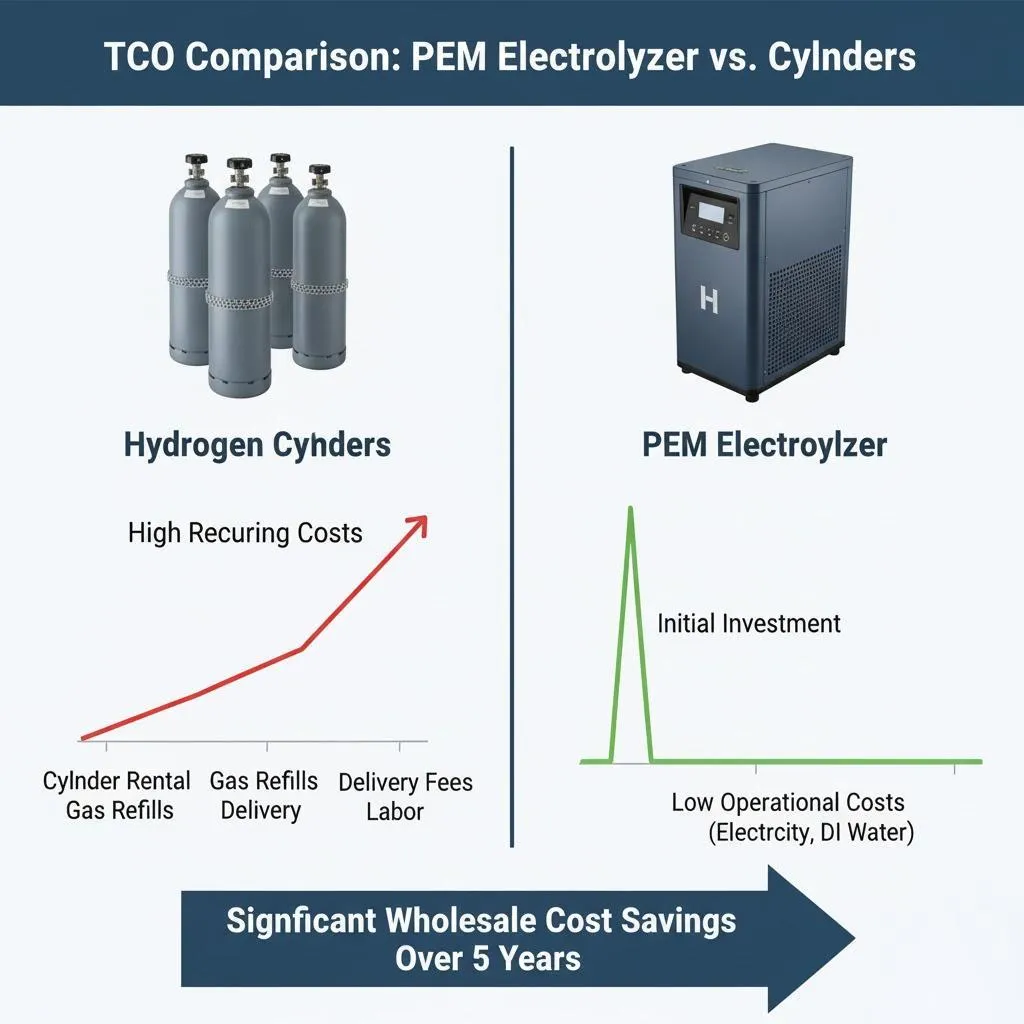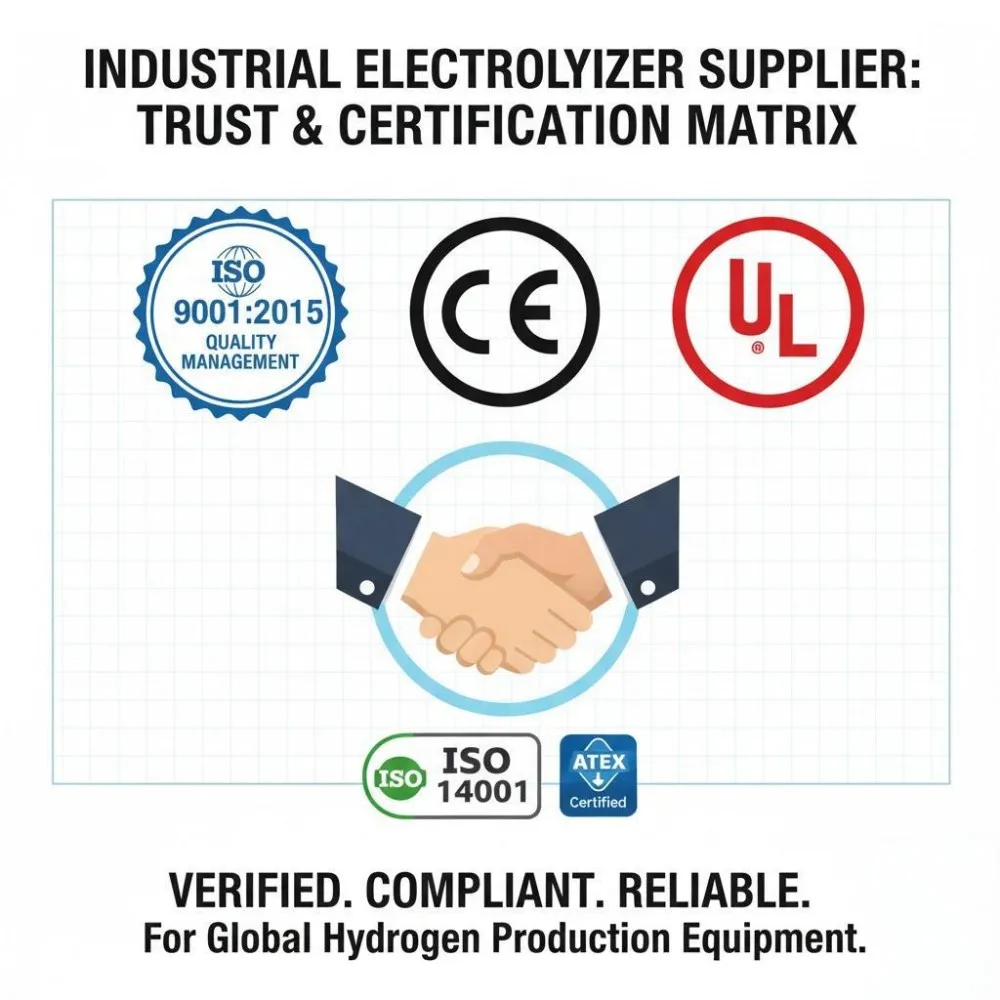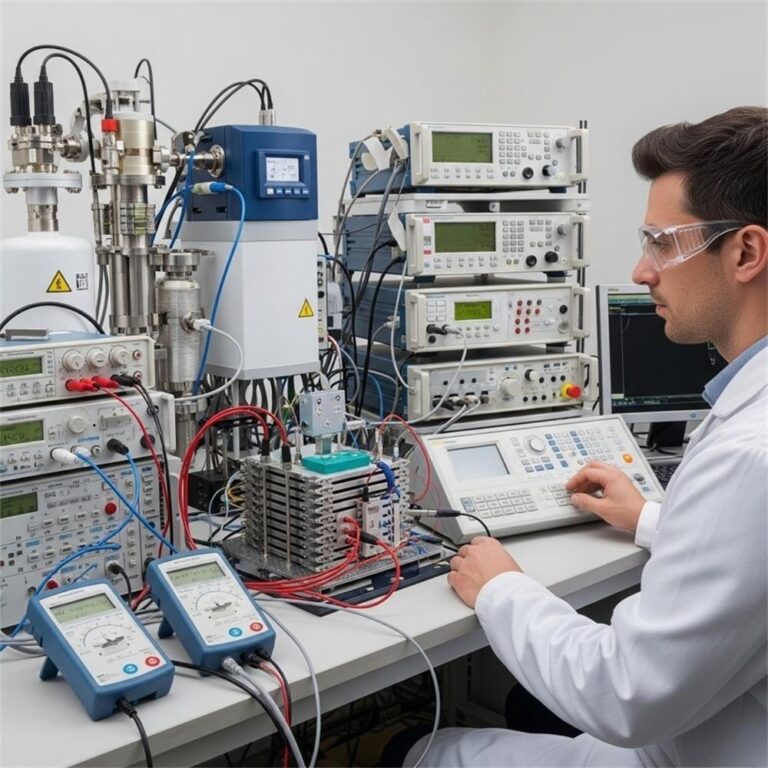Hydrogen generation is increasingly critical for laboratories and research institutions as they continue to explore new avenues in energy, fuel cell technology, and materials science. A reliable, efficient, and precise hydrogen source is crucial for ensuring the success of these experimental applications. Laboratory steam reforming hydrogen generators are at the forefront of this technology, offering controlled, high-purity hydrogen generation on-site. In this post, we’ll explore the advantages, functionality, and practical considerations of using steam reforming hydrogen generators in laboratory settings.
I. Introduction
Laboratory hydrogen generators have become indispensable tools for research and development, especially as the demand for hydrogen in various sectors, such as energy and chemistry, continues to rise. The precise control and high purity of hydrogen are essential for critical laboratory applications, from gas chromatography to fuel cell research. Steam reforming technology has emerged as one of the most reliable methods for generating hydrogen at the laboratory scale.
In the world of laboratory research, the precision and control over hydrogen generation can directly impact the accuracy of results and the safety of the experiment. Laboratory-level steam reforming hydrogen generators offer a compelling solution by providing an on-demand hydrogen source with minimal variability.

II. Understanding Steam Reforming Technology
What is Steam Reforming?
Steam reforming is a widely used method for hydrogen production, involving the reaction of hydrocarbons with steam at high temperatures. This process, known for its efficiency, converts feedstocks such as natural gas or methanol into hydrogen gas.
The Chemical Reaction
The core reaction in steam reforming can be summarized as:
$$ \text{CH}_4 + \text{H}_2\text{O} \rightarrow \text{CO} + 3\text{H}_2 $$
CH4+H2O→CO+3H2
In this reaction, methane (CH₄) reacts with steam (H₂O) to produce carbon monoxide (CO) and hydrogen (H₂). The carbon monoxide can be further converted into more hydrogen via the water-gas shift reaction, improving the hydrogen yield.
Feedstocks Used in Steam Reforming
Common feedstocks for steam reforming include:
- Natural Gas: The most common feedstock due to its abundance and relatively low cost.
- Methanol: A simpler, more readily available feedstock.
- Biomass-derived Methane: An environmentally friendly alternative.
The Steam Reforming Process
The steam reforming process involves several key stages:
- Reactor: Where the steam and feedstock are introduced at high temperatures (700–1000°C) to facilitate the reaction.
- Purification: Hydrogen produced in the reactor may contain impurities like CO, CO₂, and water. These are removed via purification systems, typically using pressure-swing adsorption (PSA) or other advanced techniques.
- Compression and Distribution: The purified hydrogen is then compressed and delivered as a reliable on-demand supply.
Steam reforming offers higher efficiency and lower operational costs compared to other hydrogen generation methods, making it ideal for laboratory applications.
III. Laboratory Applications of Hydrogen Generators
Laboratory hydrogen generators are essential in various scientific applications, ensuring a continuous and pure supply of hydrogen. Some notable applications include:
1. Gas Chromatography (GC)
Hydrogen is used as a carrier and fuel gas in gas chromatography, an essential technique in chemical analysis.
2. Fuel Cell Research
Hydrogen fuel cells require a constant and stable hydrogen supply. Steam reforming hydrogen generators offer high-purity hydrogen, crucial for experiments in this field.
3. Materials Science
Hydrogen is used in material synthesis and analysis, especially in processes requiring a controlled atmosphere.
4. Spectroscopy
Hydrogen is often used in spectroscopy applications for generating specific light wavelengths or providing a reducing environment.
In each of these applications, the quality and consistency of hydrogen are critical for obtaining accurate, reproducible results.
IV. Precision Requirements in Laboratory Hydrogen Generation
In laboratory settings, precision in hydrogen generation is non-negotiable. Fluctuations in hydrogen purity, flow rate, or pressure can lead to unreliable results. Here’s how steam reforming hydrogen generators address these needs:
1. Stable Output Pressure and Flow Rate
A stable hydrogen supply is critical for experiments. Steam reforming generators ensure consistent output pressure and flow rates, minimizing fluctuations that could impact sensitive analyses.
2. High Purity Hydrogen
Steam reforming generators are equipped with advanced purification systems to remove impurities like carbon monoxide, carbon dioxide, and water—ensuring hydrogen purity up to 99.999%.
3. Precise Temperature Control
The reforming reaction is highly temperature-dependent, and precise temperature control is essential for efficient hydrogen production. These generators feature advanced thermal control mechanisms to maintain optimal reaction conditions.
4. Automated Monitoring and Control
Modern steam reforming hydrogen generators often come with automated control systems that continuously monitor critical parameters such as pressure, temperature, and hydrogen purity. This ensures the hydrogen remains within specifications throughout the experiment.
V. Safety Features of Laboratory Steam Reforming Hydrogen Generators
Hydrogen is highly flammable, making safety a top priority. Laboratory steam reforming hydrogen generators incorporate a variety of safety features to ensure safe operation:
1. Leak Detection and Automatic Shutdown
Advanced leak detection systems immediately identify any leaks in the system, triggering an automatic shutdown to prevent accidents.
2. Over-Pressure Protection
These generators are designed with over-pressure protection mechanisms that prevent excess pressure build-up, reducing the risk of system failure.
3. Flame Arrestors and Backflow Prevention
In the unlikely event of a flashback, flame arrestors prevent the ignition of hydrogen gas, while backflow prevention devices stop hydrogen from flowing back into the system.
4. Emergency Shutdown Buttons
Emergency shutdown systems provide a manual override to stop the generator in case of an emergency.
5. Compliance with Safety Standards
Most laboratory hydrogen generators meet industry standards such as ISO, UL, and OSHA regulations, ensuring the highest levels of safety.
VI. Maintenance Protocols for Optimal Performance
To ensure long-term, reliable operation, regular maintenance of laboratory steam reforming hydrogen generators is essential. Routine maintenance includes:
1. Leak and Corrosion Inspections
Periodic checks for leaks and corrosion can prevent failures and maintain safe operations.
2. Filter and Purification Cartridge Replacement
Over time, filters and purification cartridges may become clogged. Regular replacement ensures high hydrogen purity and continuous operation.
3. Reactor Cleaning
Cleaning the reactor regularly helps maintain optimal efficiency by preventing the build-up of residues from the reforming reaction.
4. Sensor and Control System Calibration
Calibrating sensors and control systems ensures accurate monitoring and control of hydrogen production.
VII. Portable Hydrogen Generators for Laboratory Use
While many laboratories rely on stationary hydrogen generators, portable hydrogen generators are becoming increasingly popular. These systems offer several advantages:
1. Flexibility in Experimental Setups
Portable units can be relocated easily, allowing for flexible experimental designs and workflows.
2. Convenience for On-Site Analysis
Portable generators are particularly useful for fieldwork or when hydrogen is needed in areas outside the laboratory.
3. Compact and Lightweight
Many portable hydrogen generators are designed to be compact and lightweight, making them easy to move and set up in various laboratory locations.
VIII. Conclusion
Laboratory steam reforming hydrogen generators offer unmatched precision, control, and safety features that make them indispensable tools for research institutions. By providing high-purity hydrogen on-demand, these systems are critical for applications ranging from gas chromatography to fuel cell research. As technology continues to evolve, we can expect even greater advancements in hydrogen generation, further enhancing the capabilities of laboratory applications.
For more information on laboratory hydrogen generators or to discuss your specific requirements, feel free to reach out. Our team is here to help you find the best solution for your needs.







